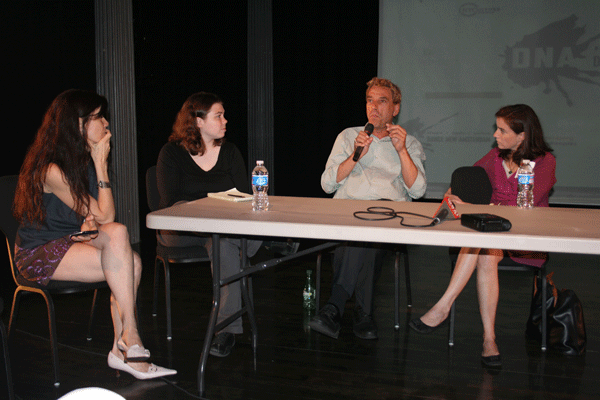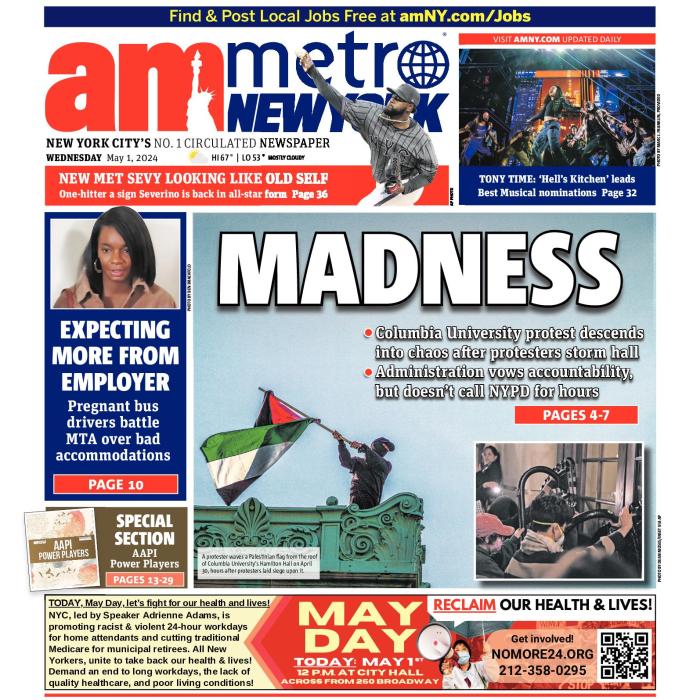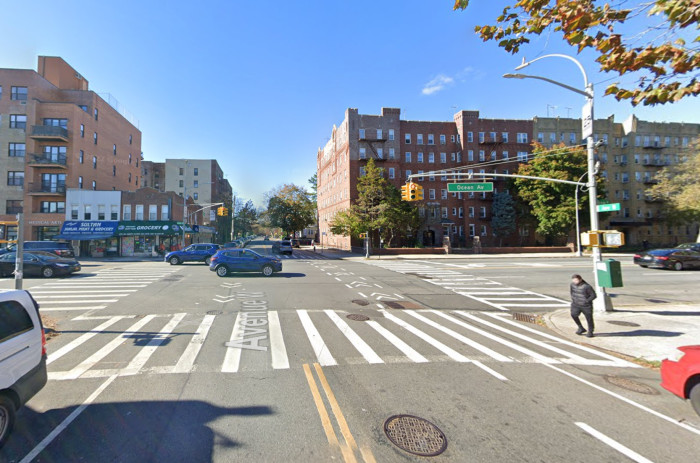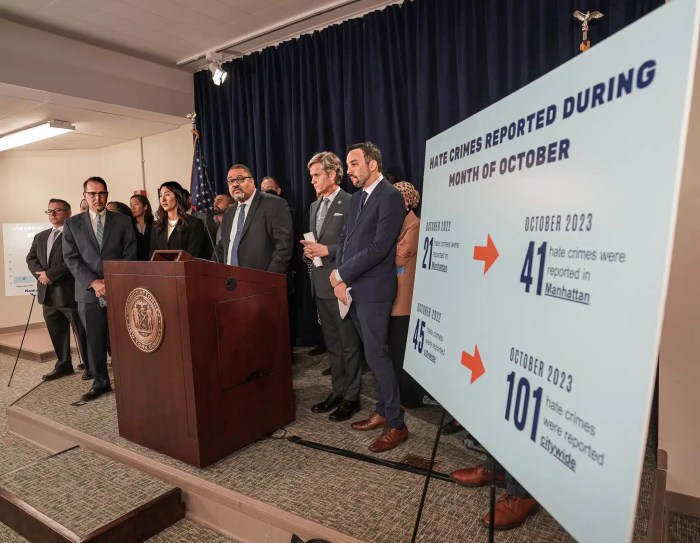
BY ALINE REYNOLDS | Downtown dance center Dance New Amsterdam (D.N.A.) hardly celebrated its feat of reaching a lease agreement with its landlord before embarking on a new endeavor of hosting regular roundtable discussions about how Downtown arts organizations can avoid being kicked out of their homes.
The first forum, held inside D.N.A.’s 130-seat theater on Fri., June 1, prompted a heated discussion about the need for systemic change in city government’s policy toward assisting neighborhood cultural arts organizations.
D.N.A.’s executive and artistic director, Catherine Peila, for one, envisions a Downtown “cultural campus,” in which several local arts groups would share resources and staff. The dance education and performance center, the first to open shop in the neighborhood following 9/11, also has ambitions for a cross-disciplinary program, in which fabric designers and experts in crafts other than dance would train D.N.A.’s dancers wishing to explore other forms of art.
Meanwhile, D.N.A. is finalizing the logistics of a joint artist-in-residence program with the Tribeca Performing Arts Center, at 199 Chambers St., that will offer at least 50 artists and faculty practice space for dance, theater and spoken-word poetry.
The flurry of ideas for new ventures comes on the heels of D.N.A.’s settlement with its landlord, Fram Realty, on an amended, 10-year lease for its 25,000-square-foot space in the city-owned Sun Building, at 280 Broadway.
However, D.N.A., like many other Downtown nonprofits, still faces financial hurdles. The group must continue to raise upwards of $1.2 million annually to maintain its facilities, including $350,000 this fiscal year to repair its bathrooms, floors and heating and cooling systems.
“We’re focusing our energies on seeing how we can develop a cultural district in this area that includes the incubator spaces…that [are on the verge of] getting pushed out of the places they kind of fertilize,” said Peila.
The solution, she and other roundtable participants said, is for the local arts organizations to collectively figure out how they can survive and not be driven out by the harsh real estate market.
Jonathan Hollander, artistic and executive director and founder of the Battery Dance Company, based at 380 Broadway, called for more effective discussions with the city in order to educate the financial powers that be about the needs of Downtown’s cultural groups.
It took the company six years, Hollander said, to nail down $150,000 in grant money from the city Department of Cultural Affairs and the Lower Manhattan Development Corporation.
“We had to make sure the two grants didn’t have terms that contradicted each other,” he said.
Hollander’s organization is one of several that are struggling to keep up with their basic operating expenses. Access Theater, whose Off-Off Broadway theater venue is in the same building as Battery Dance, can’t afford to keep its air conditioner and theater lights on at the same time during a show, according to Jacqueline Christy, the theater’s founding artistic director.
“We were in 10 NYC public schools, filling gaps when education is cutting staff and needs to reach out to the arts communities to fill those gaps,” he said, “and yet no one’s paying the [operating expenses] bill. This does not work.”
Hollander added, “We need to talk to the chairman of Goldman Sachs, we need to talk to Jamie Dimon…we need to talk to anyone and everyone who makes decisions in our city, because they hold the key,” he said.
Paul Nagle, the executive director of the Flatiron District’s Cultural Strategies Initiative and formerly Council Member Alan Gerson’s cultural policy director, countered this claim, saying that the groups aren’t yet prepared to have these kinds of conversations.
The city’s objectives, he explained, are “diametrically opposed” to the cultural groups’ goals.
“We’re looking at community development, where people who’ve invested in the community get to stay in place awhile,” he said, “[whereas] they’re looking at every available piece of property that can rise in value.”
Kevin Cunningham, executive artistic director of 3-Legged Dog, a Downtown media and theater company, said tenants in government-owned buildings get snarled in bureaucratic dilemmas. 3-Legged Dog’s landlord, the Metropolitan Transportation Authority (M.T.A.), nearly ousted the group from its venue at 80 Greenwich St. in 2010 when it was behind on rent payments.
“There’s something about the way government entities are behaving, as if they were private, commercial entities,” he said.
“For business people,” Cunningham added, “we’re a fun amenity off to the side that can be there or not.”
NYS Senator Daniel Squadron, who helped facilitate D.N.A.’s new lease agreement, conceded that the city doesn’t adequately invest in cultural space the way it invests in other sectors.
Ultimately, as the cultural group heads said, it does come down to the forces of the real estate market. The city, he said, should be coming up with tax benefits and other incentives for cultural groups.
“Manhattan would just be residential if you let it,” said Squadron. “That doesn’t make sense for the community at all — we need office and commercial.”
Squadron added, “We also need to set aside space for cultural in that same way.”
Mary Cooley, Squadron’s community liaison, said the city Department of Finance has been reluctant to dole out tax breaks to artistic groups such as those represented at the roundtable.
“They can’t give up that potential tax revenue,” she explained, “especially in hard economic times, when fiscal dollars are harder to come by.”
Fran Smyth, a manager at the Arts & Business Council’s New York chapter, affirmed that the city is short on funds for the groups, and that the competition for funds is only going to get fiercer with the upcoming political elections.
“I understand part of it,” she said. “You’re faced with a starving child, a sick person and people living in unsafe housing. That’s a tough argument to go up against. But I think there’s a real lack of appreciation for the arts as an economic driver in this city — and I don’t know how we change that, but we really have to.”

















